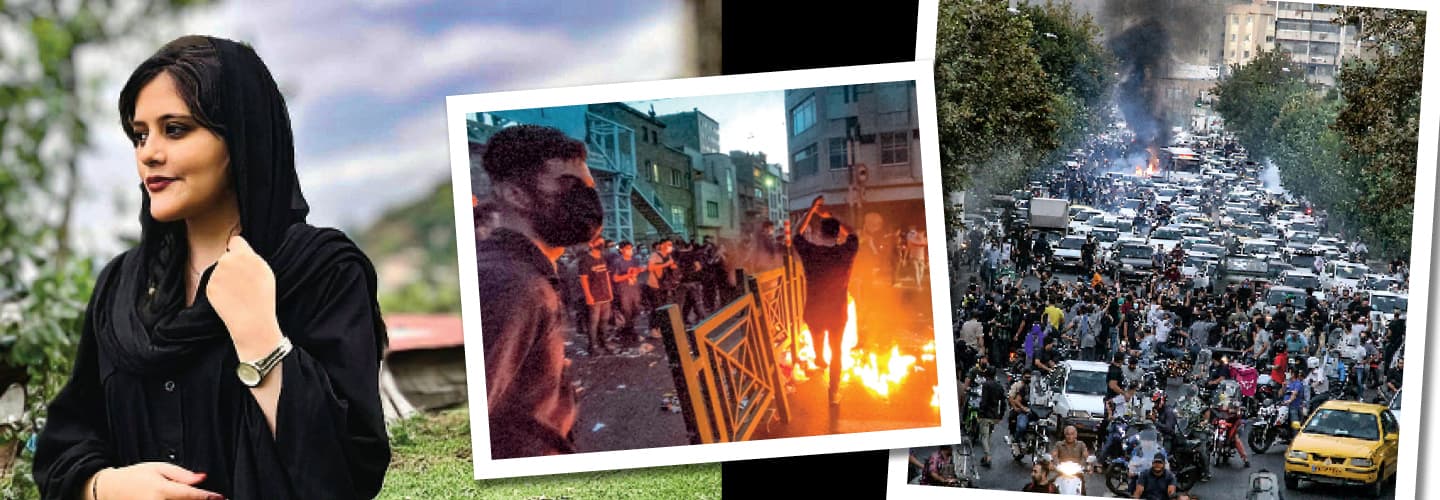The 22-year-old woman emerged from the Tehran subway, her dark hair covered with a black head scarf and her body obscured by loose clothing. That’s when Iran’s morality police spotted her. By their standards, Mahsa Amini was improperly dressed, which could mean something as simple as a wisp of hair protruding from her head scarf.
The morality police, who enforce the country’s conservative Islamic dress code and behavior rules, put her in a van and drove her away to a detention center, where she was to undergo re-education. Three days later, on September 16, she was dead.
Amini’s death has sparked the most significant outpouring of anger and defiance that Iran has seen since the 1979 revolution that transformed it into an Islamic republic. The protests have thrust Iran into turmoil that has cut across ethnic and social divides. In dozens of cities, protesters have chanted “Women, life, and freedom!” and “Death to the dictator!”—a reference to Iran’s supreme leader, Ayatollah Ali Khamenei.
The 22-year-old woman walked out of the Tehran subway. A black head scarf covered her dark hair, and loose clothing draped over her body. That’s when Iran’s morality police spotted her. By their standards, Mahsa Amini was improperly dressed. That could mean something as simple as a wisp of hair peeking out from her head scarf.
The morality police enforce the country’s strict Islamic dress code and behavior rules. They put her in a van and drove her away to a detention center. She was to undergo re-education. Three days later, on September 16, she was dead.
Amini’s death has sparked the most striking outpouring of anger and defiance that Iran has seen since the 1979 revolution that transformed it into an Islamic republic. The protests have thrust Iran into an uproar that has cut across ethnic and social divides. In dozens of cities, protesters have chanted “Women, life, and freedom!” and “Death to the dictator!” (a reference to Iran’s supreme leader, Ayatollah Ali Khamenei).

